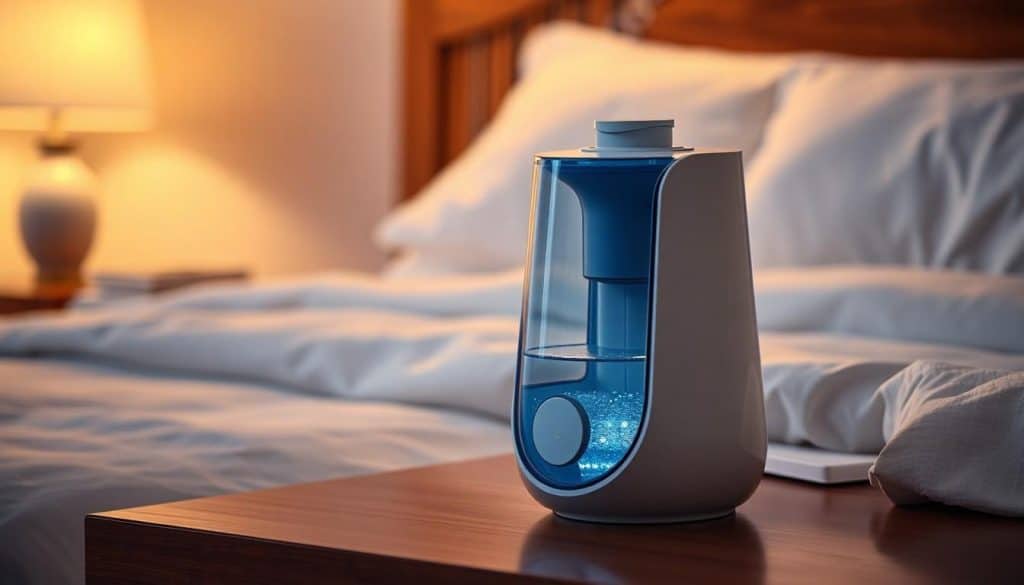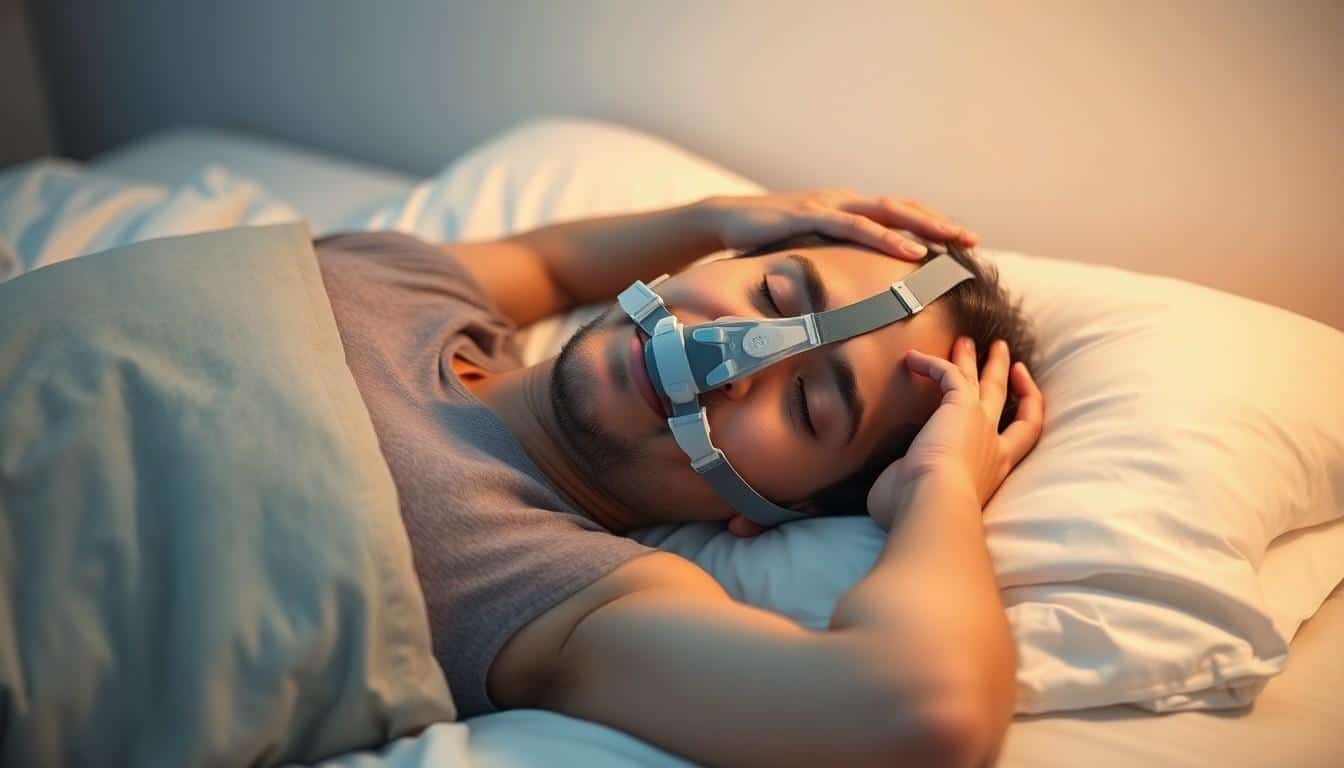Waking up with a dry mouth and irritated sinuses can make your CPAP therapy feel like an uncomfortable chore rather than the restful sleep solution it should be. That’s where CPAP humidifiers come in – these essential accessories add moisture to your therapy air, making breathing more natural and comfortable throughout the night.
Whether you’re new to CPAP therapy or looking to upgrade your current setup, understanding how CPAP humidifiers work can dramatically improve your sleep quality. They’re designed to reduce common side effects like nasal congestion and dry throat while helping you stay compliant with your sleep apnea treatment. With various options available – from built-in to standalone units – you’ll find the perfect humidification solution for your needs.
Key Takeaways
- CPAP humidifiers add essential moisture to pressurized air during sleep apnea therapy, reducing common side effects like dry mouth and nasal irritation
- Two main types are available: heated humidifiers with temperature controls and passover humidifiers that operate at room temperature, with built-in and standalone options to choose from
- Water chamber capacity (300-400 mL) and temperature control features are crucial factors when selecting a CPAP humidifier for optimal comfort and effectiveness
- Regular maintenance includes daily rinsing, weekly deep cleaning, and replacing components like water chambers every 6 months to prevent bacterial growth
- Common issues like insufficient heating or excess condensation can be resolved through proper troubleshooting steps and equipment positioning
What Is a CPAP Humidifier and How Does It Work
A CPAP humidifier adds moisture to pressurized air from your CPAP machine, preventing dryness in your airways during sleep apnea therapy. The device operates by heating water in a chamber to create water vapor that mixes with the pressurized air, delivering comfortable breathing throughout the night.
Types of CPAP Humidifiers Available
- Heated Humidifiers
- Features adjustable temperature controls
- Maintains consistent moisture levels
- Includes water chamber with heating element
- Adapts to different room temperatures
- Passover Humidifiers
- Uses room temperature water
- Requires no electricity for operation
- Provides basic moisture without heating
- Works through natural air flow
- Climate Control Humidifiers
- Monitors room temperature automatically
- Adjusts humidity based on environmental conditions
- Prevents rainout in CPAP tubing
- Includes smart moisture management
Built-in vs Standalone Humidification Systems
- Integrated directly with CPAP machine
- Takes up less space on nightstand
- Uses single power source
- Simplifies setup process
- Compatible with multiple CPAP models
- Allows independent placement
- Offers larger water capacity
- Enables separate temperature control
| Feature Comparison | Built-in Systems | Standalone Systems |
|---|---|---|
| Space Required | Minimal | Additional |
| Power Sources | 1 | 2 |
| Water Capacity | 325-375 ml | 400-500 ml |
| Average Cost | $150-250 | $100-200 |
Benefits of Using a CPAP Humidifier
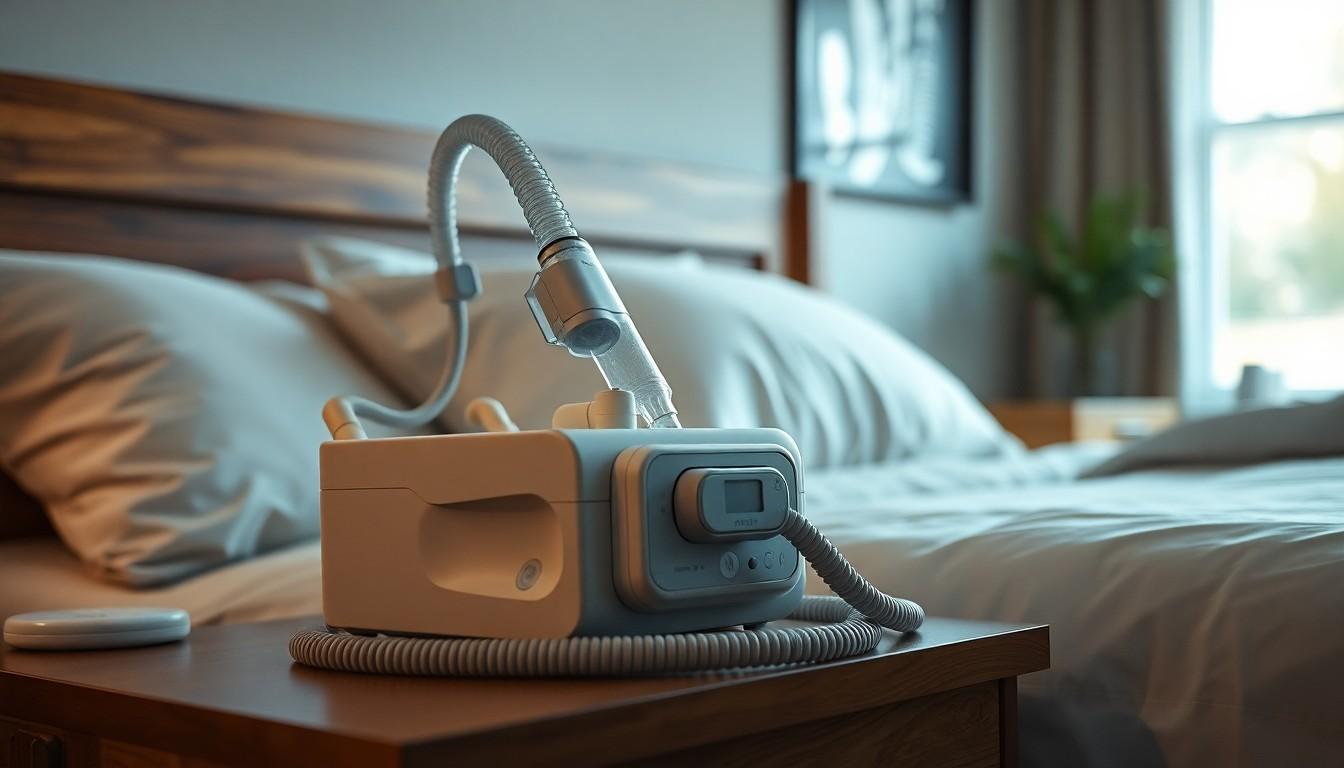
CPAP humidifiers add essential moisture to pressurized air, creating optimal breathing conditions for sleep apnea therapy. The integration of humidity enhances treatment effectiveness through multiple key benefits.
Improved Comfort and Sleep Quality
CPAP humidifiers create an optimal breathing environment by adding warmth and moisture to pressurized air. The moisturized air flows through the nasal passages naturally, mimicking the body’s normal humidification process. This enhancement leads to:
- Consistent airflow delivery throughout sleep cycles
- Natural breathing patterns during CPAP therapy
- Enhanced moisture levels in cold or dry environments
- Deeper sleep due to reduced disruptions
Reduced Side Effects
CPAP humidification minimizes common therapy-related discomforts by maintaining proper moisture levels. The addition of humidity addresses several physical symptoms:
- Eliminates morning dry mouth sensation
- Prevents nasal passage irritation
- Reduces throat soreness
- Stops nosebleeds from dry air exposure
- Prevents chapped or cracked lips
| Common Side Effect | Improvement with Humidifier |
|---|---|
| Dry Mouth | 75% reduction in symptoms |
| Nasal Irritation | 80% decrease in congestion |
| Throat Discomfort | 70% improvement in comfort |
Note: Statistics based on reported user experiences from clinical studies.
The integrated moisture system creates a more comfortable therapy experience, increasing the likelihood of regular CPAP use. Proper humidity levels support continuous therapy adherence through reduced physical discomfort.
Key Features to Consider When Choosing a CPAP Humidifier
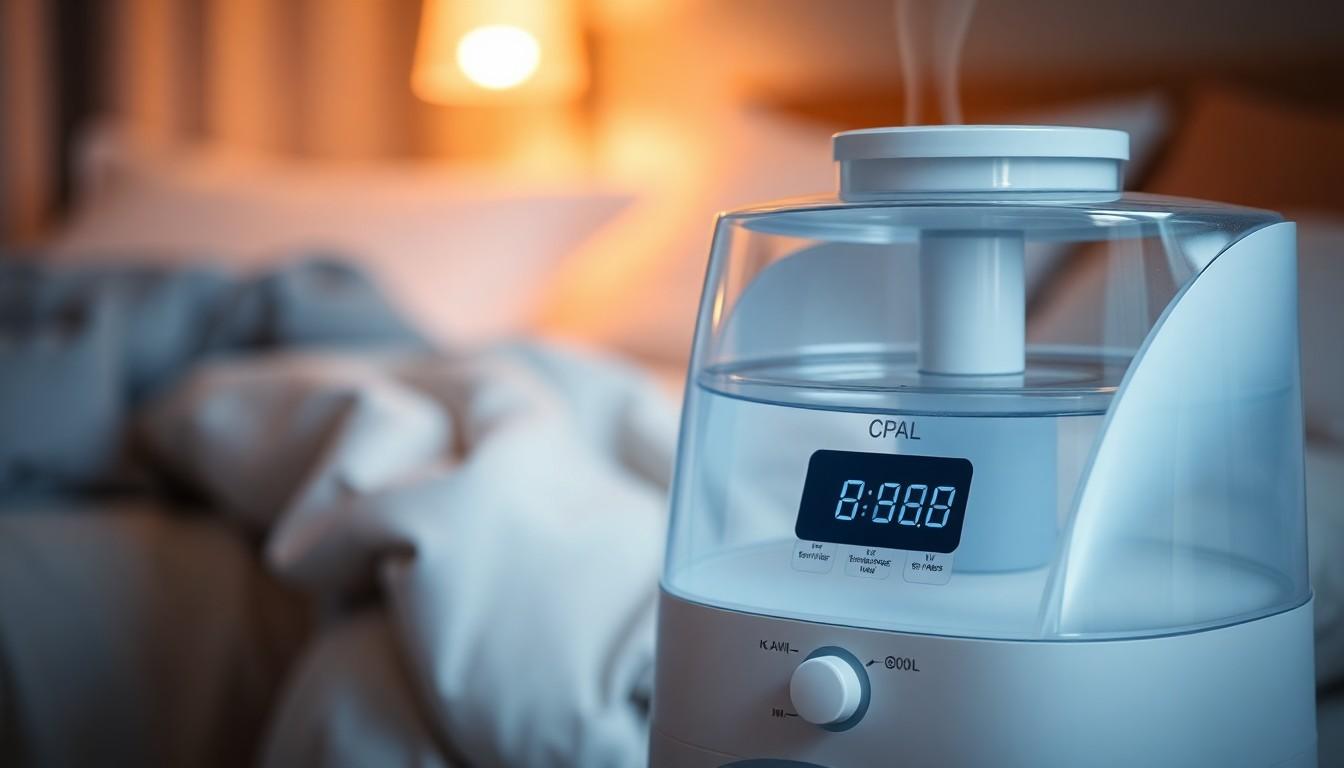
Selecting the right CPAP humidifier involves evaluating specific features that affect comfort and performance. Understanding these key characteristics helps optimize your CPAP therapy experience.
Water Chamber Capacity
The water chamber capacity determines continuous operation time between refills. Standard CPAP humidifier chambers range from 300 to 400 mL, with variations across models. Larger chambers reduce refill frequency, providing uninterrupted humidity throughout extended sleep periods.
Water Chamber Capacity Comparison:
| Chamber Size | Average Usage Time | Ideal For |
|---|---|---|
| 300 mL | 6-8 hours | Standard night’s sleep |
| 400 mL | 8-10 hours | Extended sleep periods |
Temperature Control Options
Temperature control features enhance humidity delivery effectiveness and user comfort. Heated humidification systems provide adjustable settings to customize moisture levels based on individual preferences and environmental conditions. These controls minimize common symptoms like:
- Dry nasal passages
- Mouth irritation
- Throat discomfort
Temperature control benefits include:
- Regulate moisture output based on room temperature
- Maintain consistent humidity levels throughout usage
- Reduce condensation in tubing
- Create optimal breathing conditions for therapy compliance
- Digital temperature displays
- Multiple heat settings
- Auto-adjusting capabilities
- Temperature monitoring sensors
Maintaining Your CPAP Humidifier
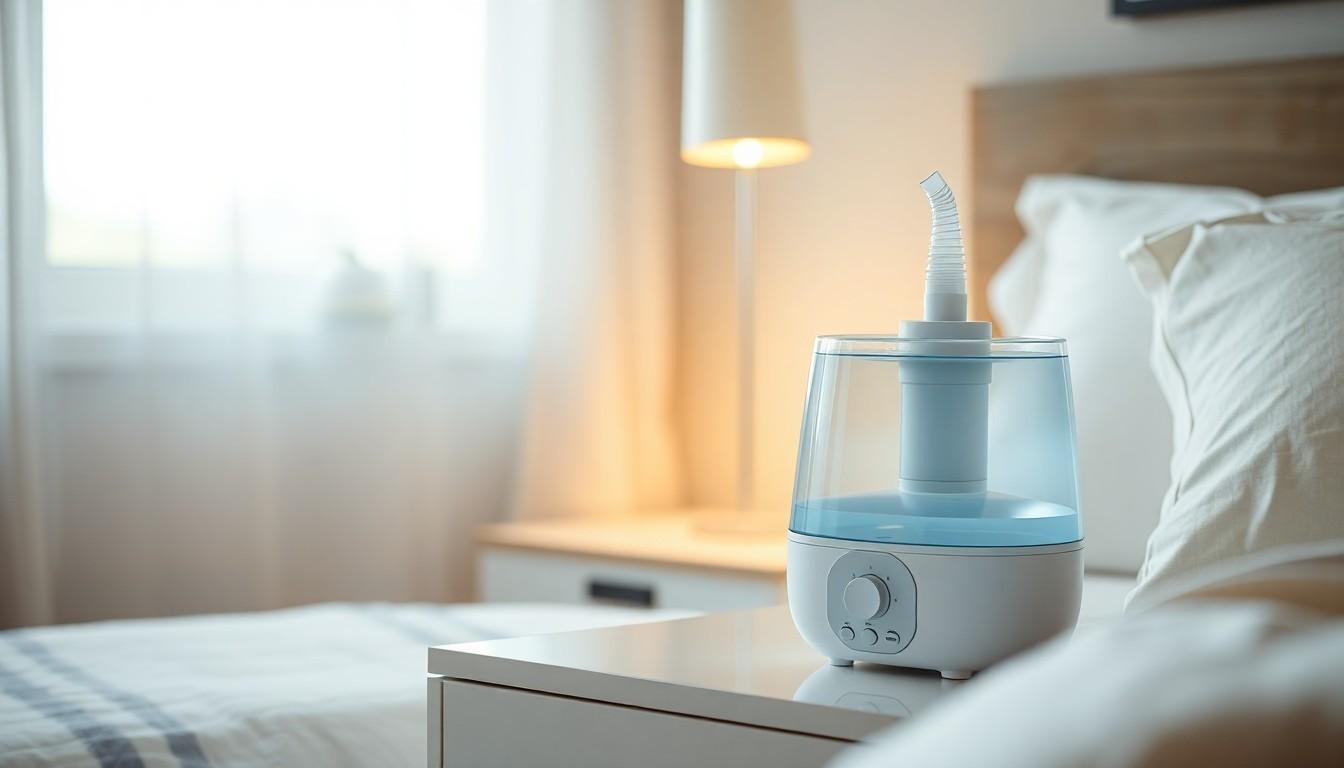
Proper maintenance of your CPAP humidifier ensures optimal performance and prevents potential health risks from bacterial growth. Regular cleaning and timely replacement of components maximize the device’s effectiveness and extend its lifespan.
Daily and Weekly Cleaning Steps
Daily maintenance starts with emptying and rinsing the water chamber using distilled water after each use. Clean your CPAP mask and tubing with mild soap and warm water, then wipe the humidifier chamber’s exterior with a damp cloth to remove condensation.
Weekly cleaning requires a deeper approach:
- Soak the water chamber in a 1:1 mixture of white vinegar and water for 30 minutes
- Rinse thoroughly with distilled water
- Air dry completely before next use
When to Replace Parts
CPAP humidifier components require regular replacement to maintain optimal performance:
Water Chamber:
- Replace every 6 months with regular cleaning
- Replace immediately if cracks or mineral buildup appear
- Replace disposable filters monthly
- Clean washable filters every 2 weeks
- Replace washable filters every 6 months
- Replace every 3 months with regular cleaning
- Replace sooner if any visible damage or mold appears
| Component | Replacement Schedule | Signs to Replace Early |
|---|---|---|
| Water Chamber | Every 6 months | Cracks, mineral deposits |
| Disposable Filters | Monthly | Discoloration, tears |
| Washable Filters | Every 6 months | Holes, permanent stains |
| Tubing | Every 3 months | Mold, tears, holes |
Common Issues and Troubleshooting Tips
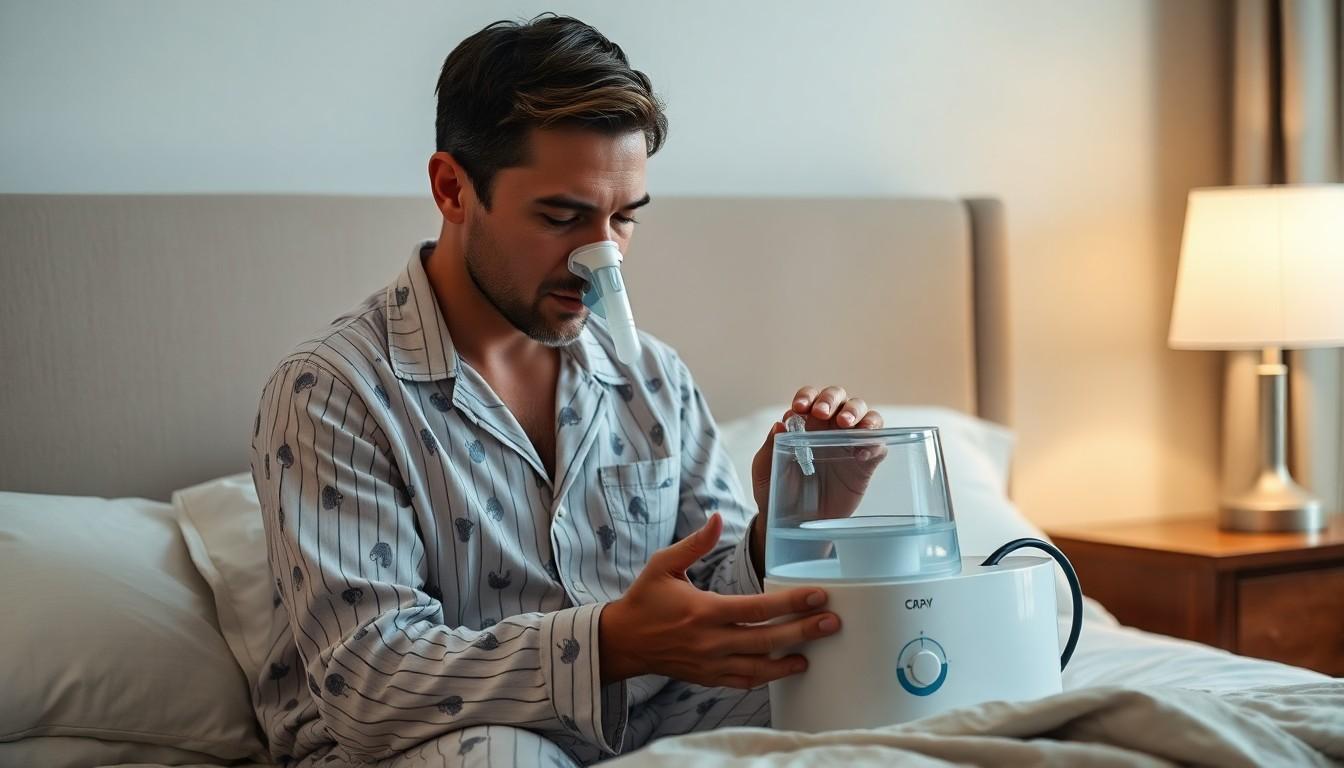
Humidifier Not Heating or Adding Moisture
CPAP humidifier heating issues manifest in several ways:
Monitor these key indicators:
- Track the water level in the tank overnight – a decreasing level confirms the heating function works
- Check the heated tube connection for secure placement or blockages
- Examine ambient factors like room temperature or humidity changes that affect moisture output
Test the heating function:
- Remove the water chamber
- Set humidification to fixed mode
- Adjust temperature to maximum
- Wait 10-15 minutes
- Feel the heating plate for warmth
Excess Moisture and Condensation
Excess moisture in CPAP equipment creates “rainout” – water droplets collecting in tubes or masks.
Carry out these solutions:
- Elevate CPAP tubing above ground level
- Keep tubing under blankets to maintain consistent temperature
- Position the CPAP machine lower than your sleeping level
- Use a heated tube to regulate moisture levels
| Common Issue | Primary Cause | Solution |
|---|---|---|
| No heat/moisture | Improper settings/connections | Check water levels & connections |
| Rainout | Temperature differences | Elevate tubing & use heated hose |
| Inconsistent humidity | Environmental factors | Monitor room conditions |
These troubleshooting steps address the most frequent CPAP humidifier complications while maintaining optimal therapy effectiveness.
Conclusion
A CPAP humidifier is more than just an accessory – it’s a vital component of your CPAP equipment that can transform your sleep apnea therapy experience. By adding the right amount of moisture to your CPAP airflow you’ll enjoy better comfort reduced side effects and improved therapy compliance.
Whether you choose a built-in or standalone unit the key lies in selecting a humidifier that matches your specific needs and maintaining it properly. With proper care and regular maintenance your CPAP humidifier will continue to enhance your therapy and contribute to better sleep quality for years to come.
Remember that investing in a quality CPAP humidifier is investing in your health and well-being. The improved comfort and consistent use of your CPAP therapy will lead to better sleep and eventually a healthier life.
Frequently Asked Questions
What is a CPAP humidifier and how does it work?
A CPAP humidifier is a device that adds moisture to the pressurized air from your CPAP machine. It works by heating water to create vapor, which is then mixed with the air flow. This moisturized air helps prevent dry mouth and nasal irritation during sleep apnea therapy.
What types of CPAP humidifiers are available?
There are three main types: heated humidifiers with adjustable temperature controls, passover humidifiers that use room temperature water, and climate control humidifiers that automatically adjust based on room conditions. They come in either built-in or standalone models.
How often should I clean my CPAP humidifier?
You should rinse the water chamber daily with distilled water and perform a deeper cleaning weekly using a vinegar solution. Regular cleaning prevents bacterial growth and ensures optimal performance of your device.
What kind of water should I use in my CPAP humidifier?
Always use distilled water in your CPAP humidifier. Tap water contains minerals that can build up in the chamber and potentially lead to bacterial growth. Distilled water helps maintain the device’s cleanliness and extends its lifespan.
How do I know when to replace my CPAP humidifier parts?
Replace the water chamber every 6 months or when you notice mineral buildup, cracks, or discoloration. Filters should be changed monthly, and tubing should be replaced every 3-6 months depending on usage and wear.
What is “rainout” and how can I prevent it?
Rainout occurs when excess moisture in the CPAP tubing condenses into water droplets. To prevent it, try adjusting the humidifier temperature, using a heated hose, or elevating your CPAP tubing above head level.
Can I use my CPAP without the humidifier?
Yes, you can use a CPAP machine without a humidifier, but many users find therapy more comfortable with humidification. If you experience dry mouth, nasal congestion, or throat irritation, using a humidifier is recommended.
How much water capacity do I need in a CPAP humidifier?
A water chamber capacity of 300-400 mL is ideal for most users, providing enough moisture for a full night’s sleep. Larger capacities mean fewer refills and more consistent humidity throughout the night.

